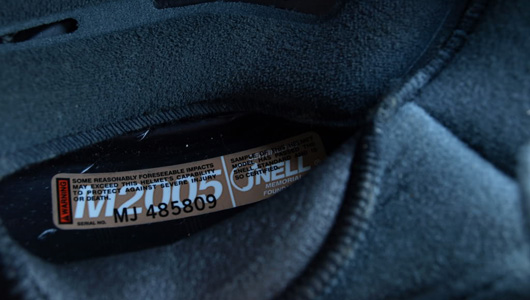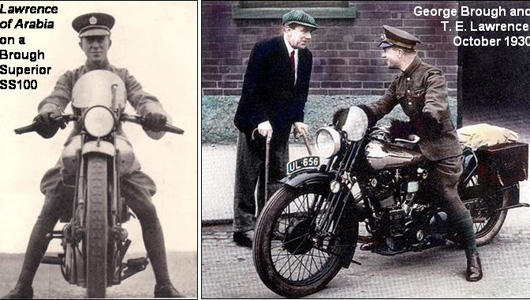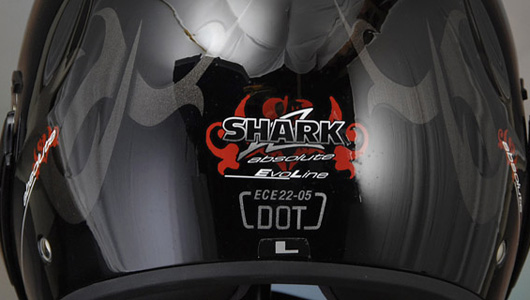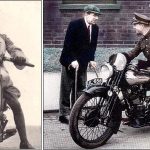A Brief History of Motorcycle Helmets
Motorcycle helmets, an essential part of our daily motorcycle or scooter riding gear, have an interesting and long history. Have you ever wondered where they came from and how they were first introduced?
More than 70% of people wear helmets improperly
Remembering T.E. Lawrence
Major Thomas Edward Lawrence, also known as T.E. Lawrence, was a renowned British Army officer who played a significant role in the Arab Uprising against the Ottoman Empire’s rule in the years 1916-1918.
T.E. Lawrence, a hero on the battlefield.
He is famously known as the greatest guerrilla warfare leader in World War I and an expert in utilizing the “hit and run” tactics to disrupt and capture Turkish forces.
His extraordinary and eventful life is vividly depicted in his writings, which earned him the nickname “Lawrence of Arabia,” popularized by the 1962 movie based on his adventures.
In 1935, T.E. Lawrence had a tragic accident on a narrow road near his villa in Wareham while riding a Brough Superior SS100 motorcycle. The accident occurred when he failed to notice two children cycling nearby due to a pothole on the road. In an attempt to avoid them, Lawrence lost control and was thrown off the bike.
During that time, the concept of “helmets” did not exist, and as a result, he suffered severe head injuries and fell into a coma. He passed away six days later on May 19, 1935. The site of the accident is now marked by a small memorial plaque by the roadside. A soldier who had experienced life and death, renowned for his numerous battles, met his demise due to a fall without proper head protection.
His death prompted thorough investigation. One of the doctors who attended to him was the neurosurgeon Hugh Cairns. The accident deeply impacted Cairns, leading him to conduct an extensive study on Lawrence’s untimely death resulting from the absence of protective headgear for riders. Cairns’ study ultimately led to the adoption of helmets for both military and civilian motorcycle riders, a practice that continues to this day.
Legislation and Standards
Recognizing the significant role of motorcycle helmets in reducing injuries and fatalities in accidents, many countries have implemented laws mandating the use of helmets for motorcycle riders. These laws apply to various types of vehicles, ranging from mopeds to small motorcycles. However, in some countries, particularly the United States, there is ongoing debate, and not all states enforce mandatory helmet laws.
Motorcycle helmets in the U.S. must meet DOT standards.
Across the globe, numerous countries have established their own standards to evaluate the effectiveness of motorcycle helmets in accidents and determine minimum acceptable requirements. Some of these standards include AS 1698 (Australia), NBR 7471 (Brazil), CSA CAN3-D230-M85 (Canada), SNI (Indonesia), JIS T8133 (Japan), NZ 5430 (New Zealand), IS 4151 (India), ECE 22.05 (Europe), and DOT FMVSS 218 (U.S.).
The Snell Memorial Foundation has developed even stricter regulations and testing procedures for helmets used in racing and other activities such as car racing, cycling, and horse racing.

Many riders in North America consider the Snell certification as the benchmark when purchasing a helmet. On the other hand, some argue that Snell’s standards put more pressure on the rider’s head compared to the U.S. Department of Transportation (DOT) standards. However, unlike Snell (and ECE), DOT standards do not test chin protection. Riders are still better protected by wearing a helmet that meets either of these two standards rather than not wearing one at all.
In the United Kingdom, the Auto-Cycle Union (ACU) has set higher standards for racing helmets compared to ECE 22.05. Only helmets with the ACU yellow sticker are allowed for use in races or championships. Even when riding on the streets, many riders in the UK opt for ACU yellow sticker helmets.
Vietnam’s national technical standard CR.
In Vietnam, helmets with the CS mark (according to Vietnamese Standards) in the past and the CR mark (according to the national technical standard) now have the same quality level, but the evaluation process for receiving the mark is different.
In Conclusion
(TTTÐ)












































